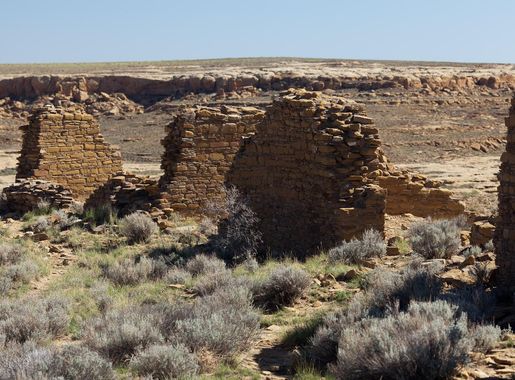
Ancient Mysteries of Chaco Canyon
Explore Chaco Culture National Historical Park: A journey into the ancient world of the Chacoans, where history, astronomy, and nature converge in New Mexico's remote canyon.
Chaco Culture National Historical Park in New Mexico is a treasure trove of ancient history and culture. The park is home to the remains of one of the most sophisticated pre-Columbian civilizations in North America. Wander through the ruins of massive stone buildings that were once bustling communities, marvel at the intricate masonry, and imagine the lives of the people who lived here over a thousand years ago. The park is located in the remote Chaco Canyon, which only adds to its mystique. The isolation of the canyon makes it feel like a journey back in time. Visitors can explore the Great Houses, which are multi-story stone structures, and ceremonial kivas, which were used for religious purposes. The park's 4,000 archaeological sites provide a unique glimpse into the Chacoan culture, their advanced astronomical knowledge, and their impressive engineering skills. Aside from its historical significance, Chaco Culture National Historical Park is also a stargazer's paradise. The park is designated as an International Dark Sky Park, offering some of the clearest night skies in the United States. Whether you're an archaeology enthusiast, a nature lover, or an avid stargazer, Chaco Culture National Historical Park offers a unique and enriching experience that connects you to the ancient past.
Local tips in Chaco Culture National Historical Park
- Visit during spring or fall for the most comfortable weather conditions.
- Bring plenty of water and snacks as there are no services within the park.
- Consider joining a ranger-led tour for deeper insights into the history and significance of the ruins.
- Don't miss the night sky programs if you're visiting during a new moon for optimal stargazing.
- Wear sturdy footwear as the terrain can be uneven and rocky.
- Check road conditions before you go; the park is accessed by dirt roads that can become impassable after rain.
Ancient Mysteries of Chaco Canyon
Chaco Culture National Historical Park in New Mexico is a treasure trove of ancient history and culture. The park is home to the remains of one of the most sophisticated pre-Columbian civilizations in North America. Wander through the ruins of massive stone buildings that were once bustling communities, marvel at the intricate masonry, and imagine the lives of the people who lived here over a thousand years ago. The park is located in the remote Chaco Canyon, which only adds to its mystique. The isolation of the canyon makes it feel like a journey back in time. Visitors can explore the Great Houses, which are multi-story stone structures, and ceremonial kivas, which were used for religious purposes. The park's 4,000 archaeological sites provide a unique glimpse into the Chacoan culture, their advanced astronomical knowledge, and their impressive engineering skills. Aside from its historical significance, Chaco Culture National Historical Park is also a stargazer's paradise. The park is designated as an International Dark Sky Park, offering some of the clearest night skies in the United States. Whether you're an archaeology enthusiast, a nature lover, or an avid stargazer, Chaco Culture National Historical Park offers a unique and enriching experience that connects you to the ancient past.
When is the best time to go to Chaco Culture National Historical Park?
Unmissable attractions to see
Petroglyph National Monument
Discover the ancient rock carvings and stunning landscapes of Petroglyph National Monument, a treasure trove of history in Albuquerque, New Mexico.
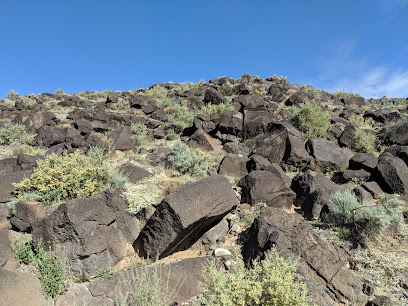
McGinn's PistachioLand Home of the World's Largest Pistachio
Explore McGinn's PistachioLand, home to the world's largest pistachio and a delightful experience of pistachio-themed treats and tours in New Mexico.
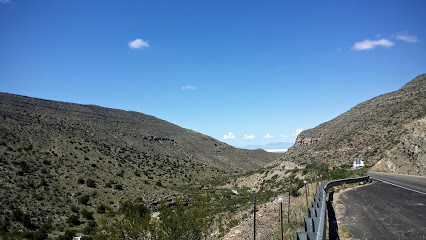
Carson National Forest
Explore the enchanting landscapes of Carson National Forest in New Mexico, a perfect destination for nature lovers and adventure seekers alike.
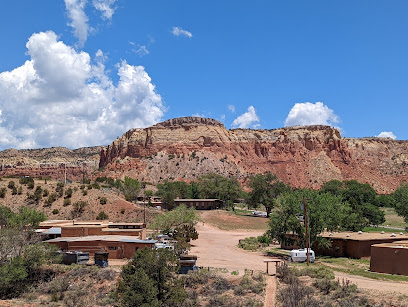
Aztec Ruins National Monument
Explore the ancient Puebloan civilization at Aztec Ruins National Monument, a UNESCO World Heritage site with stunning structures and rich history.
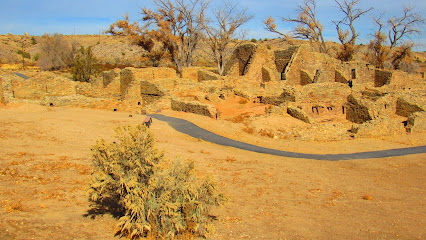
Bandelier National Monument Visitor Center
Embark on a captivating journey through ancient Puebloan history at Bandelier National Monument Visitor Center in New Mexico's stunning landscapes.
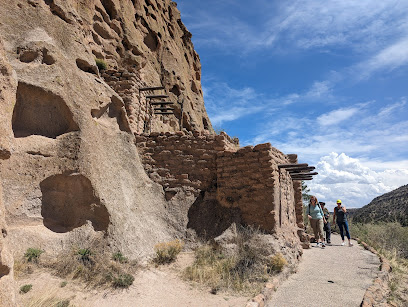
City of Rocks State Park
Discover the stunning rock formations and tranquil beauty of City of Rocks State Park in New Mexico, a must-visit for nature lovers and outdoor adventurers.
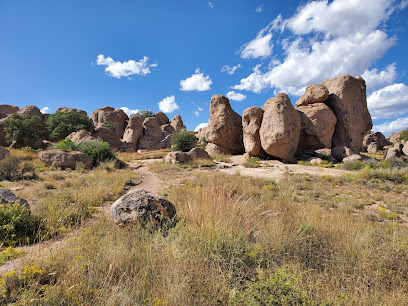
Valles Caldera National Preserve
Explore the breathtaking beauty of Valles Caldera National Preserve, a serene nature preserve in New Mexico, perfect for outdoor adventures and wildlife observation.
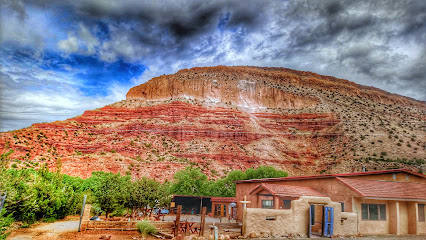
Red Rock Park
Discover the breathtaking landscapes and cultural heritage of Red Rock Park, a stunning natural oasis in New Mexico perfect for adventure seekers and nature lovers.
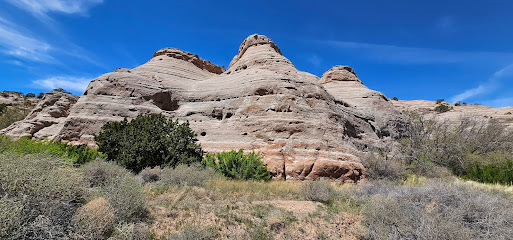
Ice Cave and Bandera Volcano
Unveil the wonders of nature at the Ice Cave and Bandera Volcano, a breathtaking destination in New Mexico, perfect for hikers and adventurers.
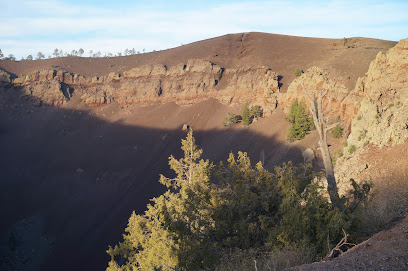
Navajo Lake State Park (Pine)
Explore the enchanting beauty of Navajo Lake State Park, a haven for outdoor enthusiasts featuring stunning landscapes and diverse recreational activities.
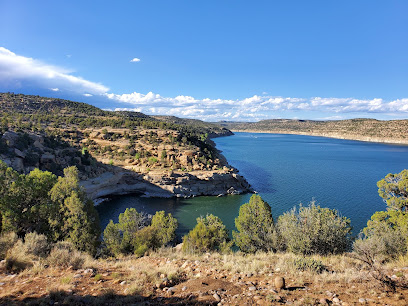
Aztec Ruins National Monument Visitor Center
Discover the ancient heritage of the ancestral Puebloans at the Aztec Ruins National Monument Visitor Center in New Mexico, a gateway to fascinating history.
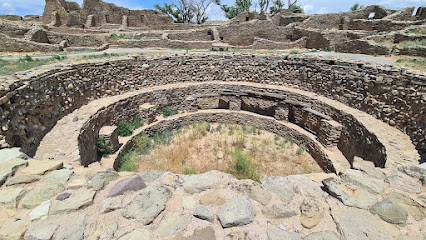
El Morro National Monument
Explore the stunning landscapes and rich cultural heritage of El Morro National Monument in New Mexico, a hidden gem for nature and history lovers.
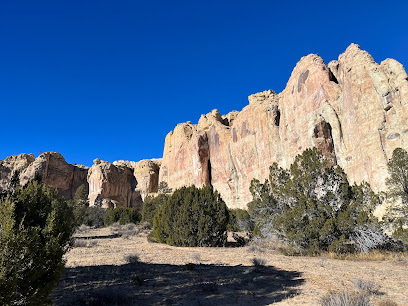
El Malpais National Conservation Area
Discover the breathtaking beauty of El Malpais National Conservation Area, a stunning landscape of lava fields, cliffs, and natural arches in New Mexico.
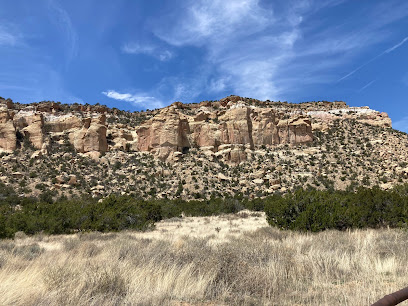
Bluewater Lake State Park
Experience the beauty of nature at Bluewater Lake State Park, a perfect blend of outdoor adventure and serene landscapes in New Mexico.
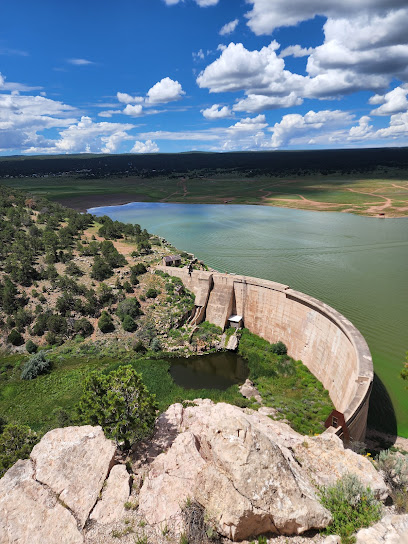
El Malpais National Monument
Discover the raw beauty of El Malpais National Monument, where ancient lava flows meet stunning desert landscapes in New Mexico.
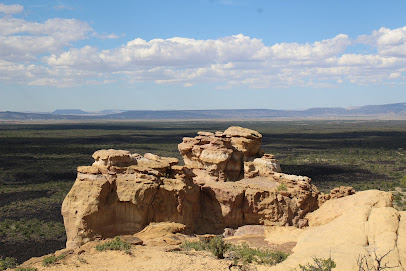
Markets, malls and hidden boutiques
Chaco Culture National Historical Park
Discover the ancient wonders of Chaco Culture National Historical Park, a UNESCO World Heritage Site showcasing Puebloan history and stunning desert landscapes.
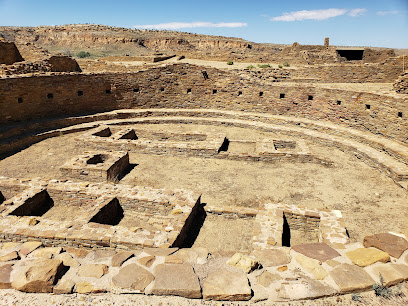
Chaco Culture National Historical Park Visitor Center
Discover the ancient wonders of Chaco Canyon at the Chaco Culture National Historical Park Visitor Center, your gateway to rich heritage and stunning landscapes.
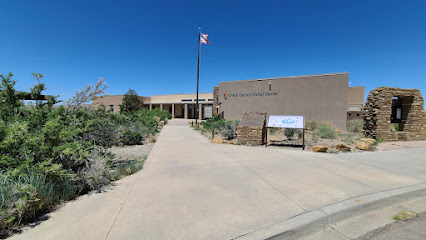
Pueblo Bonito
Explore the majestic Pueblo Bonito, a key archaeological site revealing the ancient heritage of the Ancestral Puebloans in New Mexico.
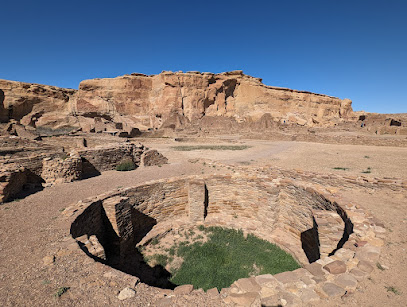
Chaco Canyon
Explore Chaco Canyon: A UNESCO World Heritage Site rich in ancient history and stunning natural landscapes, perfect for adventurous travelers and history enthusiasts.

Indian Village Gift Shop
Discover authentic Native American craftsmanship at Indian Village Gift Shop in Continental Divide, NM, where culture and artistry meet.
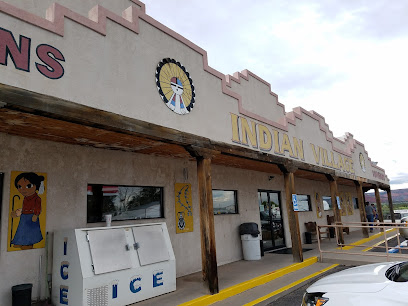
Ortega’s Indian Market Continental Divide
Explore Ortega’s Indian Market for authentic Native American crafts, local delicacies, and an unforgettable cultural experience in Continental Divide, NM.
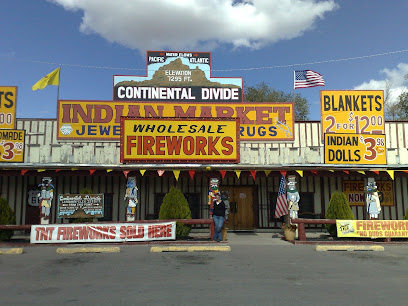
Top of the World Souvenirs
Discover authentic Native American crafts and unique souvenirs at Top of the World Souvenirs in Continental Divide, New Mexico.
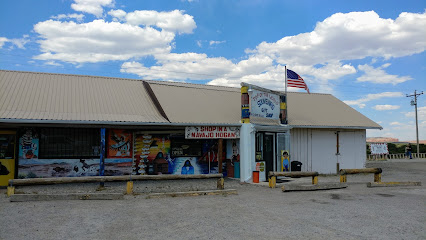
Gallo Campground
Experience the wonders of stargazing and ancient culture at Gallo Campground in Chaco Culture National Historical Park.
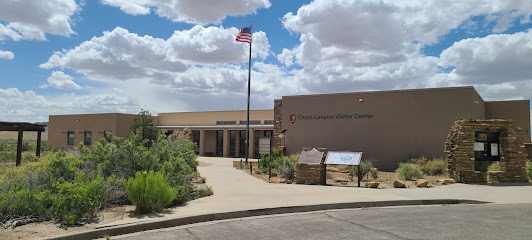
Crazy Joes Discount Store
Explore Crazy Joe's Discount Store in Gallup, NM for unique gifts and local crafts that reflect the vibrant culture of the Southwest.
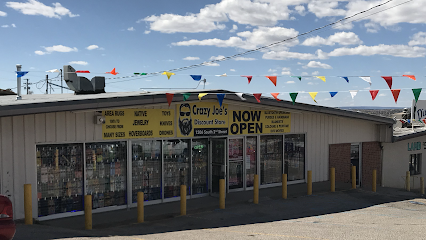
Chaco Canyon Trading Co
Explore the rich heritage of jewelry craftsmanship at Chaco Canyon Trading Co, where unique treasures await in Milan, New Mexico.

Hustle Kindness LTD Company
Explore Hustle Kindness LTD Company for unique gifts, stylish clothing, and a taste of local creativity that's perfect for every traveler.

Chaco Trade Center
Discover convenience at Chaco Trade Center in Cuba, NM – your one-stop shop for groceries, gas, propane, and laundry services.
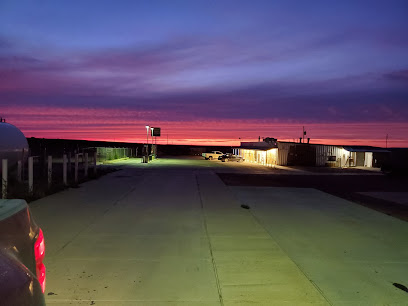
Chetro Ketl
Discover the ancient wonders of Chetro Ketl, an archaeological treasure that showcases the legacy of the Ancestral Puebloans in New Mexico.
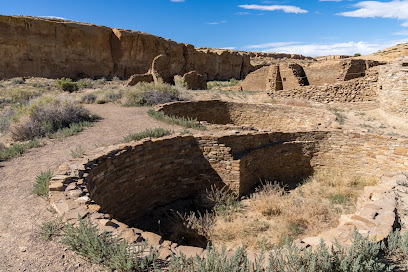
Pueblo del Arroyo
Explore the rich history and stunning ruins of Pueblo del Arroyo, an archaeological site that reveals the wonders of the Ancestral Puebloans in New Mexico.
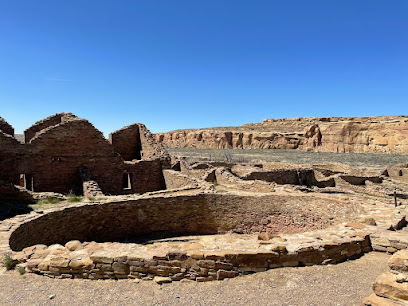
Red Mesa Trading Counselor
Explore authentic Native American culture and craftsmanship at Red Mesa Trading Counselor, your destination for unique treasures in Counselor, NM.
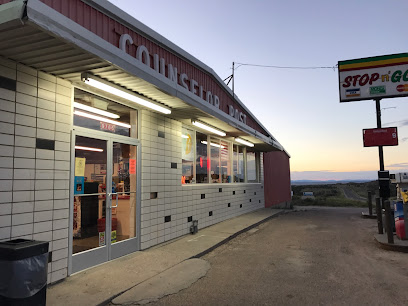
Essential bars & hidden hideouts
Sister
Discover Sister in Albuquerque – a vibrant bar offering live music, delicious cuisine, and a thrilling arcade experience for an unforgettable night out.
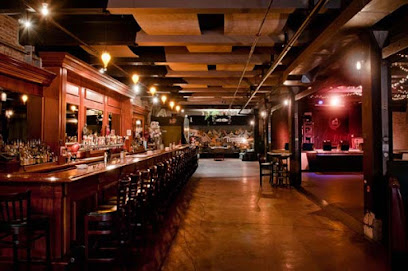
D. H. LESCOMBES WINERY & BISTRO
Discover the exquisite wines and gourmet dining at D. H. Lescombes Winery & Bistro, a must-visit culinary destination in Albuquerque, New Mexico.
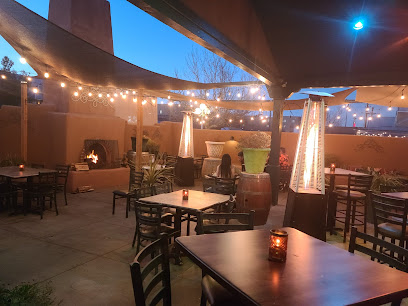
The Alley Cantina
Experience the lively fusion of American and Mexican cuisine with live music at The Alley Cantina, Taos' favorite bar and restaurant.
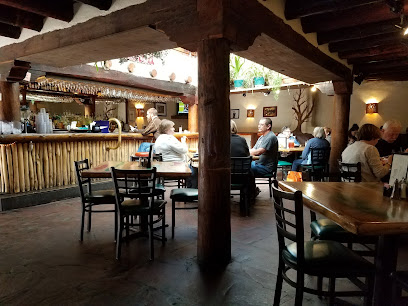
Vintage 423
Experience the elegance of Vintage 423, Albuquerque's premier lounge, cocktail bar, and steakhouse, where every meal is a celebration of flavor.
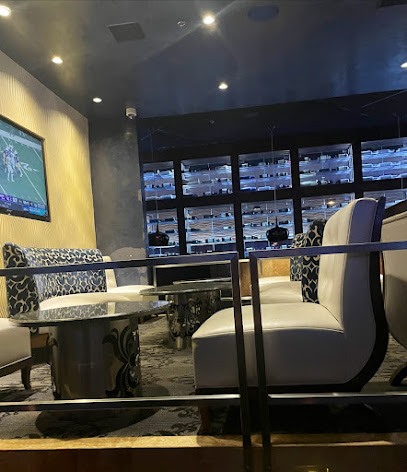
Red River Brewing Company & Distillery
Experience the heart of Red River at the Red River Brewing Company & Distillery, where local craft beer meets vibrant community spirit.
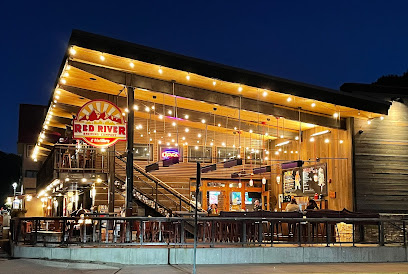
Taos Mesa Brewing Taos Tap Room
Discover Taos Mesa Brewing Taos Tap Room - a must-visit brewery in Taos, New Mexico, offering exquisite craft beers and delicious Italian cuisine.
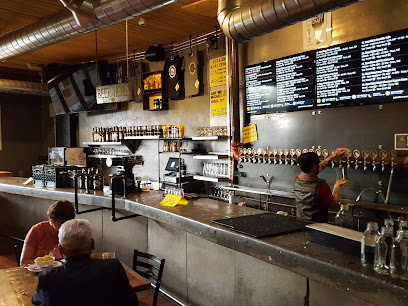
Kelley's Bar & Grill
Discover the vibrant atmosphere of Kelley's Bar & Grill in Clovis, NM, where great food and lively entertainment come together for an unforgettable experience.
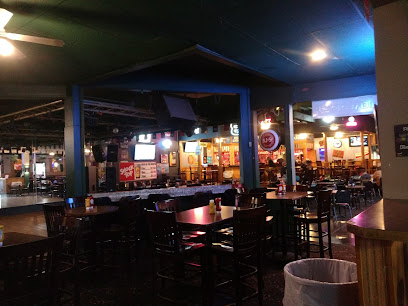
Happy Accidents
Discover the vibrant nightlife at Happy Accidents Bar, where craft cocktails meet local distillery delights in Albuquerque's Nob Hill.
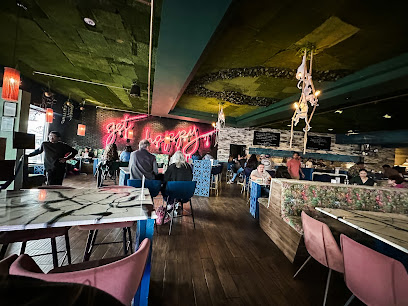
Annex Bar And Grill
Discover the taste of New Mexico at Annex Bar And Grill, where comfort food meets a vibrant bar scene in Logan.
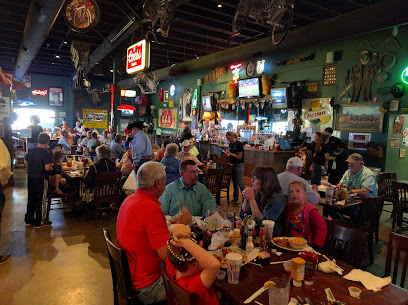
The Matador
Discover The Matador, a vibrant bar in Santa Fe, offering eclectic drinks and a lively atmosphere perfect for socializing and enjoying the local nightlife.
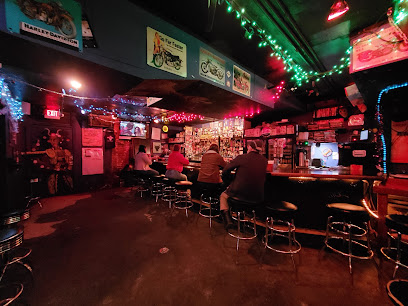
The Brakeroom - Santa Fe Brewing
Discover The Brakeroom, where craft beer meets local culture in the heart of Santa Fe, perfect for a relaxed evening with friends.
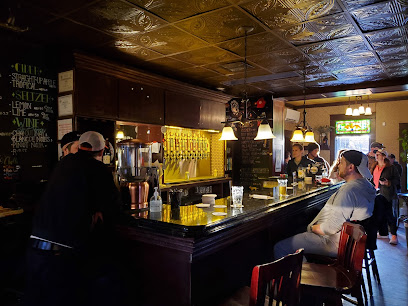
Bull O' the Woods Saloon
Experience the vibrant atmosphere and local flavor at Bull O' the Woods Saloon in Red River, NM – your destination for drinks, food, and live music.
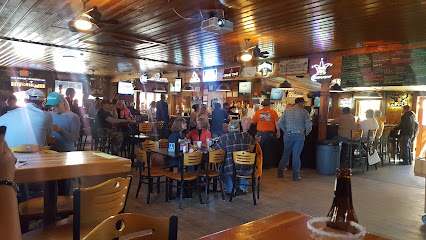
Chaco Culture National Historical Park Visitor Center
Discover the rich heritage of the Chacoan civilization at the Visitor Center, your gateway to New Mexico's ancient wonders.

Yoya's Bar & Grill
Experience the best of New Mexican cuisine at Yoya's Bar & Grill, where flavor meets community in a welcoming atmosphere.
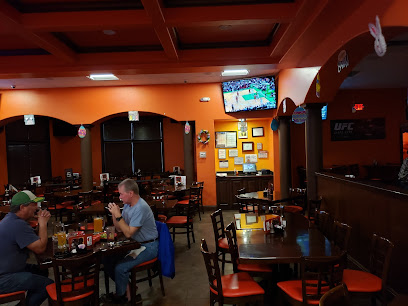
Cal's Shade Western
Discover the taste of New Mexico at Cal's Shade Western, a local grill offering delicious meals and a friendly atmosphere in Carlsbad.
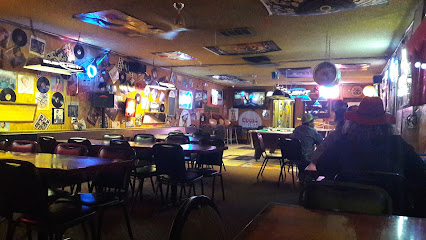
Local Phrases about Chaco Culture National Historical Park
-
- HelloYá'át'ééh
[yah-ah-tay] - GoodbyeAhe'hee'
[ah-hay-hay] - YesAoo'
[ow-oh] - NoT'a'go
[tah-go] - Please/You're welcomeT'áá hwó'ají
[tah-ah whoa-hee] - Thank youAhéhee'
[ah-hay-hay] - Excuse me/SorryHáiyáá
[high-yah] - How are you?Naa'áłk'įįh?
[nah-ahł-kee] - Fine. And you?Díí bizaad. Haa
[dee bi-zaad. hah] - Do you speak English?Bizaad yaałtł'íi?
[bi-zaad yaa-łtł-ee] - I don't understandBaa shí
[bah shee]
- HelloYá'át'ééh
-
- I'd like to see the menu, pleaseNaanish díí yee naaltsoos
[nah-neesh dee yee nah-alt-soos] - I don't eat meatShádi'ááshch'įį'
[shah-dee-ah-sh-chee] - Cheers!Shík'é
[shee-kay] - I would like to pay, pleaseBééhózin
[beh-ho-zin]
- I'd like to see the menu, pleaseNaanish díí yee naaltsoos
-
- Help!Nihí
[nee-hee] - Go away!Yágo
[yah-go] - Call the Police!Nímá t'áá hwó'ají
[nee-mah tah-ah whoa-hee] - Call a doctor!Nímá bich'į́įdí
[nee-mah beech-ee-dee] - I'm lostTó éí íiyisí
[toh ay ee-yee-see] - I'm illT'áá hwó'ají
[tah-ah whoa-hee]
- Help!Nihí
-
- I'd like to buy...Naanish díí yee ła'
[nah-neesh dee yee lah] - I'm just lookingNaakwíí sii
[nah-kwee see] - How much is it?Háadidíínanídí?
[haa-dee-dee-nah-dee] - That's too expensiveBaahóóh bił hózhó
[bah-ho-h bił hoz-ho] - Can you lower the price?Nahójí bił hózhó yee nínáhí
[nah-ho-hee bił hoz-ho yee nee-nah-hee]
- I'd like to buy...Naanish díí yee ła'
-
- What time is it?Haa'aahdéé' nízí
[hah-ah-ah-day nee-zee] - It's one o'clockBahaají
[bah-haah-hee] - Half past (10)'Ałtso
[ahł-tso] - MorningT'ááyíí
[tah-ah-yee] - AfternoonHózhóogo
[hoz-ho-go] - EveningHashké
[hah-shkay] - YesterdayÉíshjaa
[ay-shah] - TodayNízí
[nee-zee] - TomorrowNáhoní
[nah-hoh-nee] - 1Táá'
[taah] - 2Naaki
[nah-kee] - 3Tł'eejí
[tł-ee-jee] - 4Dį́į'
[dee-ee] - 5Ashdla'
[ah-shd-lah] - 6Hastą́ą́
[has-tah-nah] - 7Tsosts'id
[tsoh-tseet] - 8Tseebíí
[tsee-bee] - 9Náhást'éí
[nah-hast-ay] - 10Ná'ooltį
[nah-oh-ol-tee]
- What time is it?Haa'aahdéé' nízí
-
- Where's a/the...?Hágoónee...
[hah-goh-nee] - What's the address?Nílį́į́'
[nee-lee] - Can you show me (on the map)?Ádííshní
[ah-dee-shnee] - When's the next (bus)?Níłch'i
[neeł-chee] - A ticket (to ....)Bílká
[beel-kah]
- Where's a/the...?Hágoónee...
History of Chaco Culture National Historical Park
-
Chaco Culture National Historical Park is a testament to the ingenuity of the Ancestral Puebloans, who flourished in the region from approximately 900 to 1150 AD. These early inhabitants constructed complex multi-story buildings, known as great houses, using sandstone blocks and timber transported from distant locations. The Chacoans were skilled astronomers, architects, and traders, creating a thriving cultural and economic center.
-
The hallmark of Chacoan society is the great houses, massive stone buildings with hundreds of rooms each. The most famous among them is Pueblo Bonito, which once stood four or five stories high and contained more than 600 rooms. These structures were used for various purposes, including residential, ceremonial, and storage. The layout of the great houses aligns with solar, lunar, and cardinal directions, reflecting the Chacoans' advanced understanding of astronomy.
-
Chaco Canyon was the hub of a vast trade network that extended across the American Southwest and beyond. The Chacoans exchanged goods such as turquoise, shells, and exotic birds from Mesoamerica. Roads radiating from Chaco connected it to outlying communities and facilitated the flow of goods, ideas, and people. This extensive trade network contributed to the region's economic prosperity and cultural richness.
-
The Chacoans were keen astronomers, and their architecture reflects their celestial knowledge. Buildings like Fajada Butte feature petroglyphs and alignments that mark solar and lunar cycles. The Sun Dagger, a famous rock art site, casts light and shadow patterns that correspond to the solstices and equinoxes, serving as a sophisticated calendar system. These astronomical observations were likely crucial for agricultural planning and ceremonial events.
-
By the late 12th century, Chaco Canyon began to decline, and its great houses were gradually abandoned. Several factors contributed to this collapse, including prolonged droughts, resource depletion, and social upheaval. The Chacoans dispersed to other regions, and their descendants continued to live in the Southwest, maintaining cultural traditions and oral histories that preserve the legacy of Chaco.
-
The ruins of Chaco Canyon were first documented by European-American explorers in the 19th century. Subsequent archaeological investigations in the 20th and 21st centuries have unearthed a wealth of information about the Chacoan culture. Researchers have used advanced technologies like aerial photography, LiDAR, and dendrochronology to uncover the complexities of Chacoan architecture, trade, and society. These studies continue to shed light on the mysteries of this ancient civilization.
-
In 1987, Chaco Culture National Historical Park was designated a UNESCO World Heritage Site, recognizing its outstanding universal value as a cultural landmark. The park preserves one of the most significant pre-Columbian cultural and historical areas in the United States, providing insight into the achievements of the Ancestral Puebloans. Visitors today can explore the ruins, hike ancient trails, and marvel at the astronomical alignments that once guided this remarkable society.
Chaco Culture National Historical Park Essentials
-
Chaco Culture National Historical Park is located in northwestern New Mexico. The nearest major airport is Albuquerque International Sunport, approximately 150 miles away. From Albuquerque, you can rent a car and drive to the park, which takes around 3 hours. The park is accessed via County Road 7900 and County Road 7950 from U.S. Highway 550. Note that the roads to the park are dirt roads and may be impassable in adverse weather conditions, so it’s best to check road conditions before you travel.
-
The park is remote and there are no public transportation options directly to Chaco Culture National Historical Park. A private vehicle is necessary to visit the park. Once inside, you can explore the park by car or on foot. There are several hiking trails that allow you to explore the sites more intimately. Bicycles are also permitted on the park roads but not on the trails.
-
The official currency is the United States Dollar (USD). There are no ATMs or credit card facilities within the park, so it is essential to bring sufficient cash for your visit. Some nearby towns may have ATMs and facilities for credit card payments, but it is advisable to prepare in advance.
-
Chaco Culture National Historical Park is generally safe for tourists. However, it is a remote area, so always ensure you have enough water, food, and fuel. Weather conditions can change rapidly and can make roads impassable. It is advisable to inform someone of your travel plans and expected return time. The park does not have high-crime areas targeting tourists, but standard precautions such as keeping an eye on your belongings and avoiding isolated areas at night are recommended.
-
In case of emergency, dial 911 for immediate assistance. The park has limited cell phone coverage, so it is recommended to carry a satellite phone if possible. The nearest medical facilities are in the town of Cuba, New Mexico, approximately 70 miles away. Always carry a basic first aid kit and know basic first aid procedures. Park rangers are available to assist with emergencies within the park.
-
Fashion: Do wear comfortable and sturdy hiking shoes and dress in layers to accommodate changing weather conditions. Avoid wearing bright colors that may disturb wildlife. Religion: Do respect the cultural significance of the sites. Do not touch or climb on the ruins. Public Transport: There is no public transport available, so plan to drive. Greetings: Do greet fellow visitors and park rangers with a friendly hello. Eating & Drinking: Do bring plenty of water and snacks, but remember to pack out all trash. Don't eat or drink in the ruins to preserve their integrity.
-
To experience Chaco Culture National Historical Park like a local, consider visiting during the shoulder seasons (spring and fall) when the weather is mild and crowds are smaller. Attend a ranger-led tour or evening program to gain deeper insights into the history and significance of the park. Bring binoculars for bird watching and star gazing, as the park is known for its dark skies and is an excellent location for astronomy. Always stay on marked trails to protect the fragile desert ecosystem.
Nearby Cities to Chaco Culture National Historical Park
-
Things To Do in Gallup
-
Things To Do in Durango
-
Things To Do in Los Alamos
-
Things To Do in Bernalillo
-
Things To Do in Pagosa Springs
-
Things To Do in Albuquerque
-
Things To Do in Santa Fe
-
Things To Do in Sante Fe
-
Things To Do in Taos
-
Things To Do in Ouray
-
Things To Do in Blanding
-
Things To Do in Socorro
-
Things To Do in Alamosa
-
Things To Do in Las Vegas
-
Things To Do in Montrose








